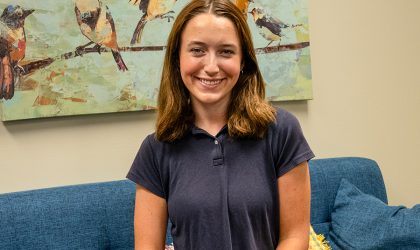Superkids Reading Meets Kids Where They Are and Helps Them Reach Their Potential

Superkids characters Oswald, Tac, and Doc did not get picked for the Superkids Suns ball team. After being sad and mad, they chose to cheer for their team anyway, and they helped their team win.
Besides the lesson about attitude and good sportsmanship, the Superkids book Just the Best offers Preschool teachers opportunities to cover interpretation of word meanings, why capitalization is used, comprehension, numbers, and reading mechanics.
Preschool students’ eyes light up when they interact in the Superkids Reading Program. With intriguing special characters—with names like Hot Rod and Ettabetta—and a variety of activities to engage different learning styles, the program by Rowland Reading Foundation develops a solid foundation for reading.
“Superkids is a phonics-based language arts program that integrates phonemic awareness, vocabulary, comprehension, spelling, and handwriting in a multi-sensory approach,” explains Laura Dyess, a preschool teacher. “All of this is accomplished with the help of the Superkids characters–14 lovable characters with whom the students form a strong connection. The characters help foster an environment where the students are eager to learn.”
“JA adopted the program to implement a more innovative approach that is research based and to meet individual needs of students,” said Beth Murray-Wilson, coordinator of studies at JA. “The program is designed to move horizontally and not just vertically (moving through skills quickly). It enables the students to have the underpinnings for reading solidified before learning to read the printed page.”
The special characters heighten the interest of students. “Students are excited when they meet a new character and are totally engaged in learning,” explains Murray-Wilson. “Students are exposed to all aspects of language and not just reading. They are immersed daily.”
“Superkids is a phonics-based language arts program that integrates phonemic awareness, vocabulary, comprehension, spelling, and handwriting in a multi-sensory approach.” – Laura Dyess
Six-year-old Natalie Shepardson’s favorite character is Ettabetta. Natalie likes her because Ettabetta “loves games and names that rhyme” and “because she’s nice.” Jake Pratt, also six, doesn’t have one favorite Superkid. “I like them all,” he says with a smile.
Each Superkids lesson begins with a daily routine. The short activities that are included in the daily routine help children listen for beginning, middle, and ending sounds, rhyming words, syllables, and other phonemic awareness skills. Instead of a verbal answer, children may be asked to raise a letter card or make a motion to tell what letter makes the sound or jump one time if the pair of words rhymes.
In the daily routine, there is always a dictation and handwriting component.
“One day we may complete an activity in the Student Booklet in our reading small group, or we may read a book together from the Superkids Library,” says Dyess. “We also try to utilize the ‘Blending Board’ daily in order to give the children practice sounding out words and blending them together.”
“One great aspect of this reading program is the variety of ways one concept is taught.” – Laura Dyess
In a recent session, students encountered a challenging word while reading Just the Best. In the story, the Superkids characters Oswald, Tac, and Doc are not “selected” for a Superkids Suns athletic event. There was a momentary pause in reading.
“It’s a hard one, but we’re going to sound it out,” says Dyess. She produces a white board, and the word “selected” is written out with a marker and then sounded out. The students immediately repeat the word correctly.
But the instruction doesn’t stop there. Proper interpretation of the word follows.
“What does “selected” mean?” asks Dyess.
“They got picked!” says a student. Dyess follows with examples of how the word “selected” means to pick or choose.
Answers are given verbally, but sometimes motion answers the question just as effectively.
A student reads what the character Doc says: “I bet the Red Slicks will stomp the Suns.”
“What does the word “stomp” mean?” says Dyess.
“Beat,” exclaims a student.
“What is another meaning for that word?” queries Dyess.
Feet start moving as a student demonstrates another meaning of the word “stomp.”
“Being the second year in place, we continue to make the program our own by adding important skills we feel are necessary to meet the rigor of JA’s curriculum.”
– Beth Murray-Wilson
Superkids takes into account different learning styles. “One great aspect of this reading program is the variety of ways one concept is taught,” said Dyess. “We understand that each child learns differently, and this program gives teachers a wide range of activities to engage every student.”
Faculty members report that parents are seeing results. “Parents who have seen the program in action are amazed at how quickly and efficiently their children are reading and spelling. They see the excitement in their children’s eyes when they see their character friends in reading material,” said Murray-Wilson. “Being the second year in place, we continue to make the program our own by adding important skills we feel are necessary to meet the rigor of JA’s curriculum. Parents are eager to watch their children thrive in a reading program that excites and nourishes their children’s minds.”
Long-term, Superkids helps create readers and writers who have a strong vocabulary. “Superkids meets ‘kids’ where they are in their learning journey,” says Murray-Wilson. “It pulls them forward to reach their potential as a learner and dovetails nicely into the first grade curriculum currently used at JA.”


